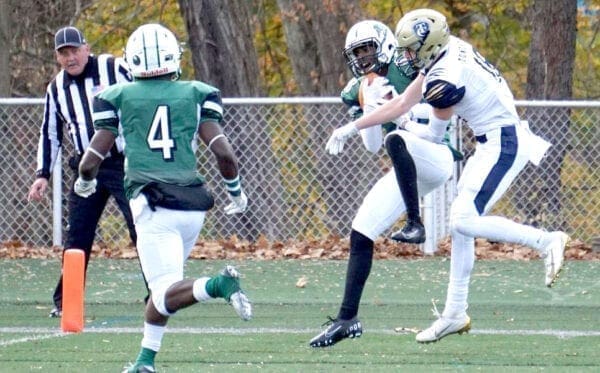The world of collegiate athletics took a page from the business world Friday and waited until the start of the weekend to deliver the sobering yet likely expected news of sports schedule modification.
In short? No football this fall, at least as far as Division III’s Ohio Athletic Conference and Presidents’ Athletic Conference are concerned.
That’s also a no for soccer, volleyball, cross country, golf, and tennis, though the PAC will try to push ahead, for now, with low-contact sports like golf and tennis.
The OAC made its announcement around 3:30 p.m. earlier today. The PAC followed less than an hour later.
Their announcements were fairly similar, and follow the Pennsylvania State Athletic Conference’s similar motion little more than a week ago.
“The OAC believes we can continue to provide an excellent experience for our student athletes,” OAC Commissioner Tim Gleason said via a press release, “while continuing to make the health and safety of our student-athletes, coaches, staff, families, fans and campus communities our highest priority.”
All fall sports in the OAC are being moved to the spring. Winter sports which normally get under way in November will have the start of competition delayed to 2021.
The PAC tried hold out as long as possible, but it too, felt this was the best decision for the conference. But unlike the OAC, the PAC will attempt to still compete in golf and tennis.
It’s also looking at the possibility of low impact spring sports, like track, being moved to the fall.
“We wrestled long and hard before deciding to postpone competition in the high-and-medium contact sports of football, soccer, volleyball, and cross country this fall, a difficult disruption for our student-athletes and coaches,” admitted PAC Presidents’ Council chair Dr. Calvin Troup.

Optimism Slowly Extinguished
Bethany Athletics Director Steve Thompson admitted he and other leaders around the conference still felt good about fall sports prior to recent developments.
Even when the PSAC shoe fell, Thompson still felt confident. But as news and suggested actions by the NCAA came trickling in, the writing started appearing on the wall.
“We’d been pretty optimistic through this, the commissioners, the presidents and the Ads within the PAC worked hard over the summer to figure out a way to get students back and competing this fall,” Thompson said. “Even when it started to snowball from some of the other D3 conferences, we were optimistic.
“But the more information and guidance we received last week from the NCAA really started to change the conversation. It made it a lot tougher for high contact sports.”
It is question of safety and also of money, one that most small to even mid-major colleges don’t have an answer for.
In high impact sports like football, the NCAA recommended testing on a weekly basis, along with testing and results within 72 hours after each official game for athletes, coaches, officials and staff. For medium contact sports, testing was to be done biweekly.
Recommendations and funding to cover the costs of said recommendations are rarely joined. That’s multiple six-figures in costs just for the fall, not an expense many schools can weather.
“We would basically be testing all of the time, and the costs of that would be in the hundreds of thousands of dollars,” Thompson said. “That’s very problematic. That’s even going to be hard for a lot of Division I schools to do.
“The Power 5s probably could do it, but even for the mid majors, that would be tough.”
Breaking the News, and the Plan
Thompson noted the athletic department is sharing the news with the Bison student athletes and coaches today. From there, plans are already in motion to a) continue workouts and conditions for fall sports athletes in the interim and b) shift the schedule to the spring.
While far from ideal, having so many sports participating at the same time may create some unique and exciting opportunities on campus come 2021.
“There is a chance we could be hosting five sports events at our stadium,” Thompson said. “We could have a football game, men’s and women’s soccer and men’s and women’s lacrosse.
“We’re trying to encourage looking at the opportunities this does present and the unique opportunities from a student-athlete experience.
“We could have a triple header of men’s and women’s basketball plus volleyball back to back in the gym, and it would be a rocking atmosphere.
Thompson knows the importance of the athletic portion of the student-athlete experience. He was a three-year letterman on the Wooster men’s basketball team and even made an NCAA tournament appearance.
He also knows first and foremost; these athletes want to compete; doing so in the spring as opposed to not at all is certainly preferable.
“We’ll see what the feedback is as they find out, but a lot of them just want to compete,” Thompson said. “As a former student athlete, I know it will be hard for them right now. But as clarity comes, they will start to see competition is in their future, and there are still some things we can do in the fall with practices and potential scrimmages, just within our campus.”
Thompson wants to make sure those competitive juices keep flowing despite the delayed start to the collective seasons.

